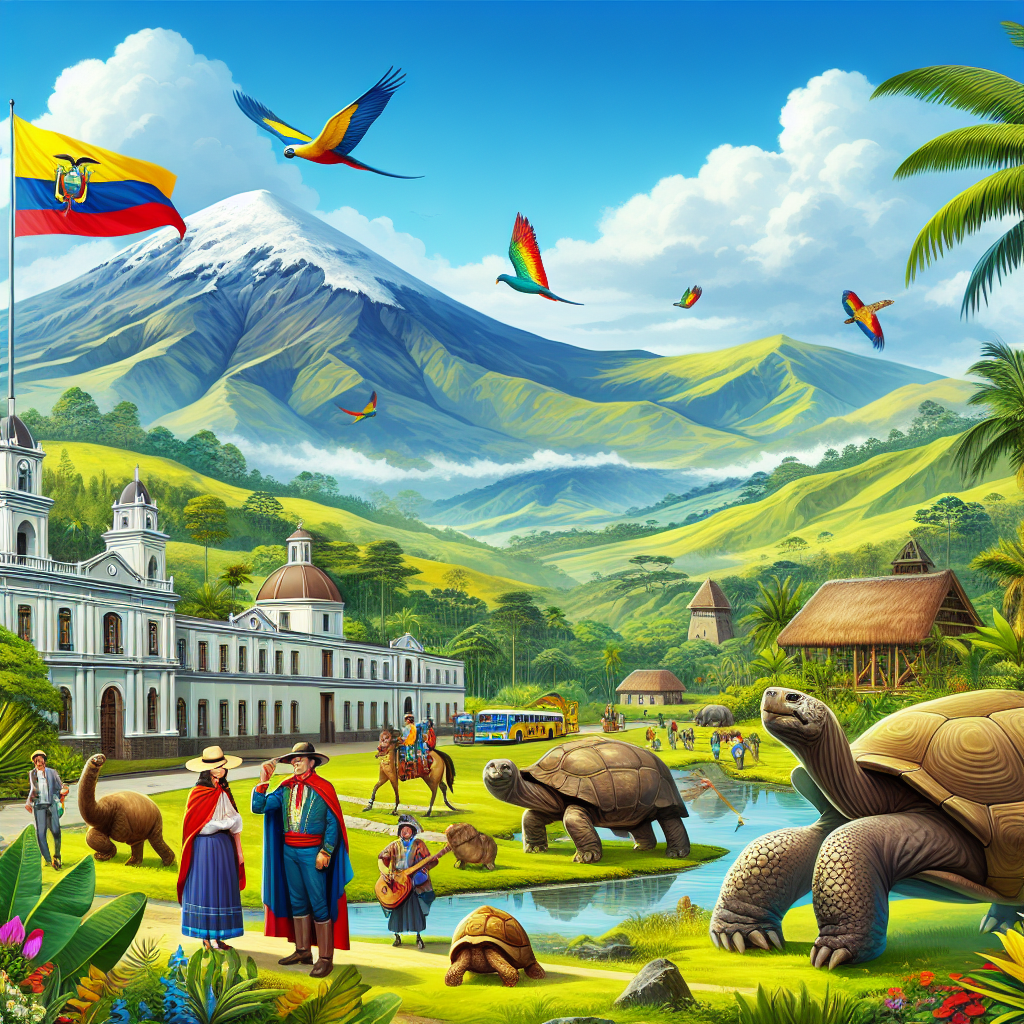Ecuador Welcomes Two New UNESCO Global Geoparks Celebrating Geodiversity
The geopark thus becomes more than a protected area—it is a living landscape, where nature and indigenous knowledge coalesce in harmony.

UNESCO has officially designated two new Global Geoparks in Ecuador—Napo Sumaco and Tungurahua Volcano—joining the ranks of protected geological wonders across the globe. Recognized on April 10, 2025, by the UNESCO Executive Council, these sites not only enrich Ecuador’s reputation in the field of geological conservation but also highlight the country’s commitment to community-driven sustainable development.
These additions come during a landmark year as the UNESCO Global Geoparks initiative celebrates its tenth anniversary since its inception in 2015. The program honors regions with geological heritage of international significance and aims to integrate conservation, education, and sustainable tourism to benefit local populations.
Napo Sumaco: Amazonian Geodiversity Meets Ancestral Wisdom
Situated where the majestic Andes give way to the dense Amazonian rainforest, the Napo Sumaco UNESCO Global Geopark is a geological treasure trove spanning over 170 million years of Earth’s history—from the Jurassic period to modern times.
Geological Features and Biodiversity
Central to this geopark is the Sumaco Volcano, a unique stratovolcano that holds potential for future eruptions. It’s noteworthy not only for its rare volcanic composition but also for its surrounding karst systems—limestone landscapes where speleothems (stalactites and stalagmites) are studied for insights into prehistoric climate change.
Beyond its geology, the area is a hotspot of biological diversity, boasting over 6,000 plant species and a wide range of endemic animal species. Many of these organisms are found nowhere else on Earth, underscoring the region’s ecological importance.
Community Stewardship and Cultural Integration
At the heart of Napo Sumaco's conservation strategy are local indigenous communities, particularly the Kichwa people. Their ancestral concepts of minga (collective work) and turkana (community defense and care) ensure that the geopark is maintained through shared responsibility.
Cultural initiatives flourish through local groups like:
-
Pushak Runakunas Guides – promote eco-tourism and educate visitors on the region’s geological wonders.
-
Yachak Awakkuna – artisans who create traditional Amazonian crafts using natural materials like pigments, seeds, and mullos (shells).
-
Mikusha Kawsari Gastronomic Group – champions Amazonian chakra agroecology by blending traditional culinary practices with modern gastronomy to serve medicinal and nutritious foods.
The geopark thus becomes more than a protected area—it is a living landscape, where nature and indigenous knowledge coalesce in harmony.
Tungurahua Volcano: Resilience at the Edge of the Andes
In the highlands of central Ecuador lies the Tungurahua Volcano UNESCO Global Geopark, a dramatic testament to Earth’s powerful geological forces. Covering over 417 million years of geological history, it offers breathtaking vistas of volcanic cliffs, deep ravines, and glacial relics.
Volcanic Landscape and Historical Significance
At its heart is Tungurahua Volcano, one of Ecuador’s most iconic active volcanoes. The area is rich in geothermal activity, giving rise to therapeutic hot springs long revered for their healing properties. Seismic events in 1797 and 1949 shaped the physical and cultural landscape, with modern towns like Baños de Agua Santa emerging as symbols of resilience and adaptive reuse.
Between 1999 and 2016, repeated volcanic eruptions tested the limits of these communities, yet they rebounded with innovative approaches to adventure tourism, local enterprise, and education.
Cultural Anchors and Sustainable Enterprise
The geopark includes five municipalities—Baños, Patate, Pelileo, Guano, and Penipe—and is home to indigenous cultures like the Salasaca and Puruhá, known for their intricate weavings, music, and oral traditions.
Noteworthy initiatives within the geopark include:
-
GeoAmigo Cafeteria “Casa del Volcán” – A volcano-themed cafe owned by local entrepreneur Indira Medina, who incorporates regional produce and ancestral recipes into her menu.
-
Las Caras Tourist Complex – A volcanic marvel where visitors can see petrified roots and rocks sculpted into human-like faces by the Killuyakus people, revealed after the 2006 eruption. The site also offers mud therapy, horseback rides, and guided geological tours—all managed by locals.
A Model of Geo-Tourism and Education
Tungurahua serves as a beacon for scientific research and eco-tourism, making geology accessible through immersive experiences. These range from studying lava flows to soaking in natural hot springs, showcasing how geodiversity fuels both learning and livelihood.
Ecuador’s Rising Leadership in Geopark Development
With these two new designations, Ecuador now hosts three UNESCO Global Geoparks, including the previously recognized Imbabura Geopark, reinforcing its role as a regional leader in conservation-based development.
UNESCO’s Director-General Audrey Azoulay lauded the designations:
“By promoting geological heritage, geoparks serve as a beacon for sustainable development, conservation, and education, demonstrating that economic progress and environmental protection can and should go hand in hand.”
Through its inclusive and science-driven geopark model, Ecuador demonstrates how natural heritage, cultural identity, and community engagement can converge to shape sustainable futures. The Napo Sumaco and Tungurahua geoparks embody this vision, turning ancient lands into vibrant symbols of resilience and hope.
ALSO READ
Himachal Pradesh Cabinet Makes Strategic Amendments for Sustainable Development
Netherlands Pledges EUR 34M to UNDP to Boost Global Sustainable Developments
CM Yogi Adityanath's Swift Response to Tragic Accident and Vision for Sustainable Development
Yogi Adityanath Advocates Collaborative Effort for Sustainable Development and Zero Carbon Future
Global Leaders Sign Hamburg Declaration on Responsible AI for Sustainable Development










